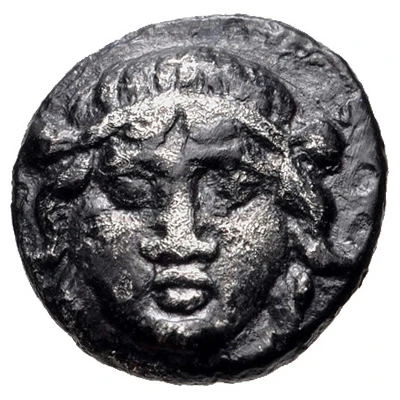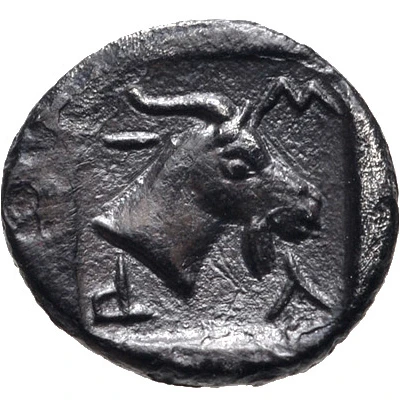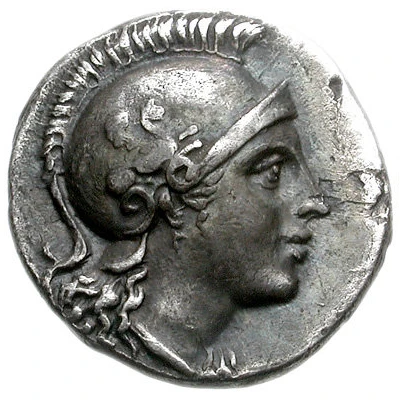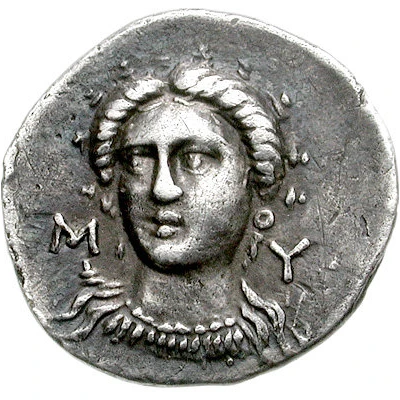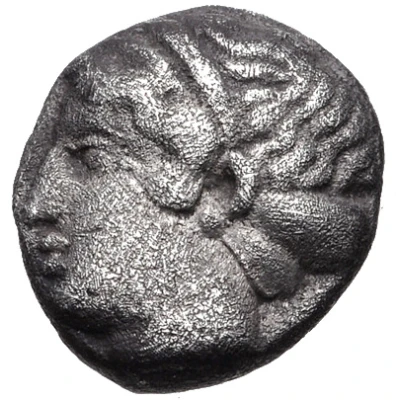
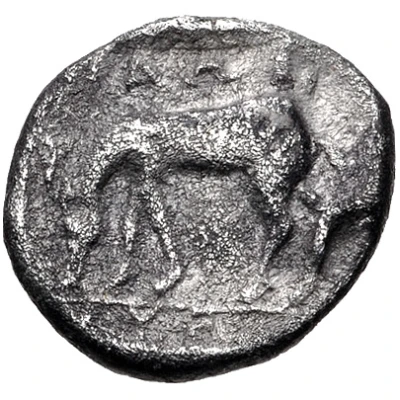

© Classical Numismatic Group, Inc.
Diobol 400 BC - 300 BC
| Silver | 1.10 g | 9.0 mm |
| Issuer | Myrhina (Aeolis) |
|---|---|
| Type | Standard circulation coin |
| Years | 400 BC - 300 BC |
| Value | Diobol (⅓) |
| Currency | Drachm |
| Composition | Silver |
| Weight | 1.10 g |
| Diameter | 9.0 mm |
| Shape | Round (irregular) |
| Technique | Hammered, Incuse |
| Orientation | Variable alignment ↺ |
| Demonetized | Yes |
| Updated | 2024-10-09 |
| Numista | N#143751 |
|---|---|
| Rarity index | 100% |
Reverse
Stag grazing towards the left. First part of the inscription in exergue, and the rest above. All within incuse square
Script: Greek
Lettering:
ΝΑΩΝ
ΜΥΡΙ
Interesting fact
The Diobol coin was used as a form of currency in ancient Greece, specifically in the city-state of Myrhina in Aeolis, and it was made of silver. The coin weighed 1.10 grams and had a diameter of about 1.5 centimeters. Despite its small size, the Diobol was an important coin in ancient Greece, as it was used to buy everyday items like bread, wine, and other necessities. It's fascinating to think that over 2,000 years ago, people were using coins like the Diobol to purchase goods and services, and that these coins have survived to this day, providing a glimpse into the past.
Price
| Date | Mintage | VG | F | VF | XF | AU | UNC |
|---|---|---|---|---|---|---|---|
| ND (400 BC - 300 BC) | - | - | - | - | - | - |
Values in the table are based on evaluations by sales realized on Internet platforms. They serve as an indication only for Diobol (400 BC - 300 BC) coin.
